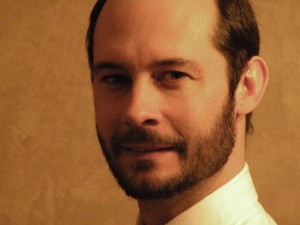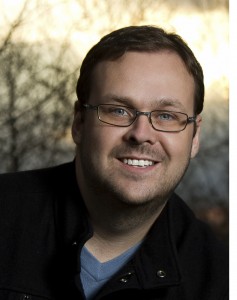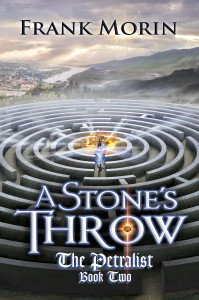“Come in, — come in! and know me better, man!” -Charles Dickens, A Christmas Carol
We’d love for you, our wonderful readers, to get to know us better. That’s why, each month, Kristin Luna will interview a member of The Fictorians. We’ll learn more about each member, such as their writing processes, their work, where they live, and what they prefer to drink on a cold winter’s day. We hope you enjoy this monthly installment of Meet the Fictorians.
Meet the Fictorians:
Frank Morin
Kristin Luna (KL): Hi Frank!
Frank Morin (FM): Kristin, as always, it’s a pleasure.
KL: When did you join the Fictorians?
FM: I was one of the first members of the Fictorians who wasn’t an original founding member. I joined just months after the original group was formed. As soon as I heard about the idea, I saw the brilliance of it and decided I had to become part of it. I’ve never looked back.
KL: Where do you live? Are you inspired by your surroundings when you write?
FM: For most of my life, I lived in New England, but I moved with my family to southern Oregon about five years ago. This is a beautiful part of the country, with a great climate, mountains, rivers, and lots of outdoor activities, which I enjoy. I’m a scoutmaster, so I get to camp and hike and explore more than I would otherwise.
I try to draw inspiration from everything I know, and I definitely look to real environments when developing settings. I’ve traveled some, and hope to travel much more in thefuture. It’s all great fodder for the creative process.
KL: I feel like you’ve been putting out books left and right. I’m really in awe of your productivity. Do you have any words of advice for our readers on that?
FM: Thanks. Last year was a big year. I released three major titles and jumped into indie publishing with both feet. This year, I’m planning on four or five major titles, with some short story publications worked in somewhere too. My books tend to be long – about 150,000 words, so it’s a challenge to release so many.
The most important advice is to write every day. Make a commitment and stick to it. Some days writing is less fun than other days, but when I force myself to sit down and start typing, I can find the fun, even if I lacked motivation to begin with.
I also recommend setting goals that will motivate you to try harder, goals so high they might scare you as much as they motivate. I set the goal to launch eight books last year. Not physically possible, but I tried and I worked like crazy to try to make it. I learned a lot of lessons and got further than I ever could have without setting that stretch goal.
And enjoy the process. I love writing and I often tell people I’m my own biggest fan. That love of story will radiate off the page. It helps me keep going, and readers feel it.
KL: You’re currently working on a new series, The Petralist. Book 2 came out in December of 2015. When is book 3 coming out? Can you give us a quick elevator pitch of the series?
FM: I’ve been releasing books in two series. The Petralist is my YA fantasy series that has been doing quite well. It’s a fun, epic read full of big adventure, big magic, and lots of humor. Book three should be out in May, and it’s shaping up to be even better than the first two.
Set in Stone kicked off the series, introducing Connor and his friends as their remote village became ground zero for an escalating international crisis. In a kingdom where only the nobility are supposed to have special powers, Connor’s secret curse might hold the key to stopping the war and saving his village from destruction.
The other series is the Facetakers, my alternate history fantasy series. It’s been described as Mission Impossible meets Assassin’s Creed. It’s a fast-paced, world-spanning adventure that also delves back in time as opposing forces with superhuman enhancements battle for control over pivotal moments in history to control the power needed to shape the future. Fun stuff.
KL: What’s the biggest lesson you’ve learned from writing a series?
FM: Series are fun, but they definitely offer unique challenges. Each novel needs to push the over-arching storyline forward, but each novel needs to be standalone enough for readers to pick it up and enjoy it, even if they might not have read previous works, or forgotten much of those earlier novels. The other challenge is in making each novel resonate with the series but still remain unique enough that readers don’t think I’m just re-hashing the same old plot ideas I’ve used before.
I’ve tried to learn lessons from failures I’ve seen in other series, and so far the response has been very positive.
KL: What’s your favorite book or short story you’ve written so far?
FM: That’s such a hard question! Each book and story is like a part of me. Perhaps that makes me seem schizophrenic or suffering from a very split personality, but it’s true. Like I mentioned earlier, I’m my own biggest fan, and when I sit down with any of my stories, I get sucked in by them, even though I wrote them.
But if I had to choose, I’d say Set in Stone, book one of the Petralist. That story started as a project with my kids. We tell a lot of stories in our home, and the kids were demanding I give them something epic. So I threw down the challenge: they come up with a magic system, and I’d make up stories using it.
They did, and I did. What started as a fun journey of ad-hoc stories at home became a year-long journey with characters we came to love. Writing novels based off of those verbal adventures was a no-brainer. The books are dramatically different from those early verbal drafts, but some nuggets have remained, and the kids and I love to rediscover them as we read the stories again and again.
KL: What do you like to do when you’re not writing?
FM: Life is full, and never boring. I almost never have time for television. I’m a self- employed computer consultant and I try to write as close to full-time as possible. Plus I’m busy with my family and church and community. I’m a scoutmaster of a local Boy Scout troop, and we camp every month. I love outdoor activities, SCUBA, but also reading and playing video games with the kids when I can. I try to be active and enjoy life.
KL: Do you write to music or in silence?
FM: I usually listen to instrumental music when I write. Most often, I listen to Piano Guys radio on Pandora, and other similar stations I’ve been customizing. The music helps free my mind, but I can’t often listen to lyrics because the words distract me.
I’m convinced that “Numb” by Linkin Park would make the perfect theme song for a movie-quality book trailer for Set in Stone. Listen to it after reading the book and you’ll see.
KL: What’s your favorite blog post you’ve written for The Fictorians? I know, there are a ton, but what’s the one you’re most proud of?
FM: Wow. Another impossible question. I don’t think I can pick a single favorite, but there are a couple of contenders I could mention.
One that comes to mind is “Working the Humor Scale” where I discuss different degrees of humor. I’ve explored using humor in my stories, particularly the Petralist novels, and it’s a fun process. With each story or novel, one of the important aspects I look at is where on the humor scale the novel is going to fall.
I’m also a fan of setting stretch goals. I’ve done a couple of posts on the topic, including one in January of this year, but I think the one I’d like to highlight is “Go Big or Stay Home”. Take life by the horns, take a chance, and go for it.
If you have any questions for Frank, please leave a comment below. Thank you for reading!
 A day doesn’t go by when one of my writer friends proudly proclaims online, “It’s 3am, I should sleep but I just need to finish this scene. I’ll rest when I’m dead.” It’s almost like a badge of honor for writers to show others how late into the night they work, sacrificing sleep, personal time, and free time. When I started focusing my life and career toward writing, these were the posts that I thought I needed to live up to. They were inspirational. Sacrifice all for your dream. Go, go, go, until there’s nothing left.
A day doesn’t go by when one of my writer friends proudly proclaims online, “It’s 3am, I should sleep but I just need to finish this scene. I’ll rest when I’m dead.” It’s almost like a badge of honor for writers to show others how late into the night they work, sacrificing sleep, personal time, and free time. When I started focusing my life and career toward writing, these were the posts that I thought I needed to live up to. They were inspirational. Sacrifice all for your dream. Go, go, go, until there’s nothing left.

 Evan Braun is an author and editor who has been writing books for more than ten years. He is the author of The Watchers Chronicle, whose third volume, The Law of Radiance, was released earlier this year. In addition to specializing in both hard and soft science fiction, he is the managing editor of The Niverville Citizen. He lives in Niverville, Manitoba.
Evan Braun is an author and editor who has been writing books for more than ten years. He is the author of The Watchers Chronicle, whose third volume, The Law of Radiance, was released earlier this year. In addition to specializing in both hard and soft science fiction, he is the managing editor of The Niverville Citizen. He lives in Niverville, Manitoba.

